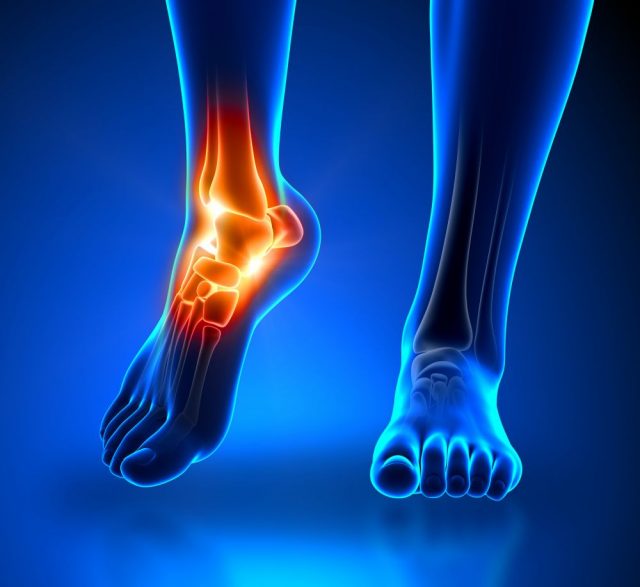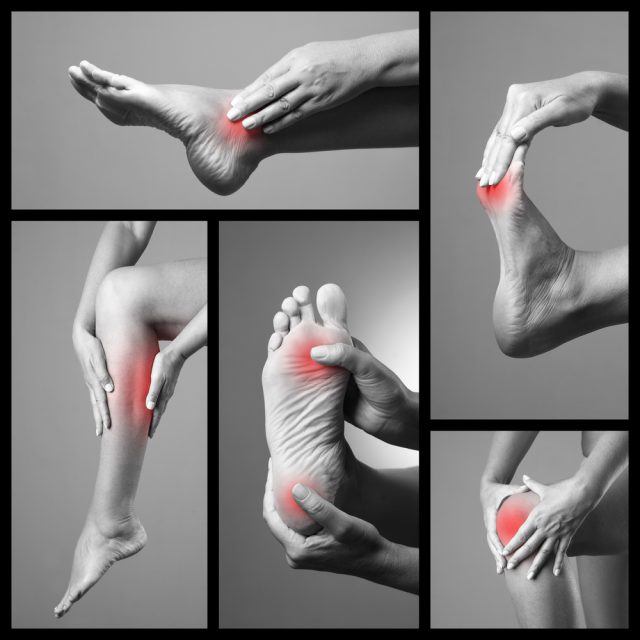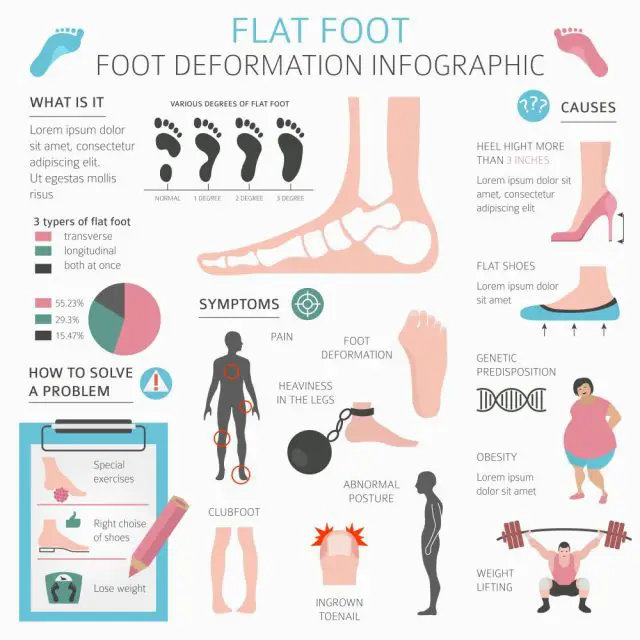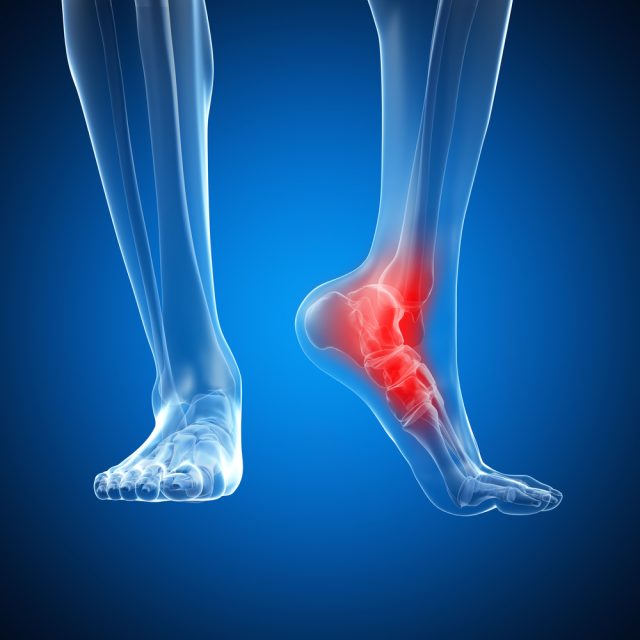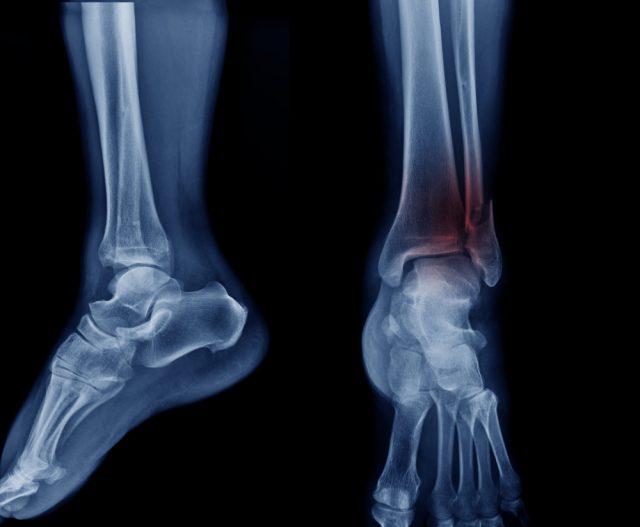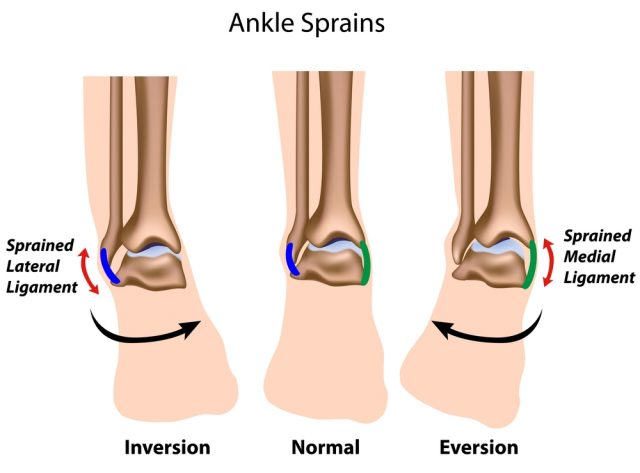Ankle Pain: Symptoms, Causes and Treatment
Introduction
Many of us have fallen victim to ankle pain. For some, it’s temporary and a result of too much movement. It’s likely this type of ankle pain will go away on its own. Others experience persistent ankle pain that seems to get worse without any real reason. For these individuals, ankle pain can be the indication of a more serious underlying issue. Below, we explore ankle pain symptoms and ankle pain treatments.
Symptoms of Ankle Pain
If you’re experiencing ankle pain, there’s a good chance you already know the symptoms. Pain is pain, after all. At the same time, if the pain is accompanied by swelling, redness or limited movement, you might want to see a doctor. There are several other aspects of ankle pain that may suggest a more serious issue underlying. Many people tend to ignore or brush off the less serious symptoms. That could be leading to a more serious issue or health complication. If you have any of the symptoms listed below, you might want to see the doctor:
- Pain in one or both ankles, the bottom of the foot or the heels
- Aching or burning sensation in ankle
- Swelling or redness
- Ongoing bouts of pain
- Continuous and constant pain
- Pain worsens after standing/sitting too long
- Lessens through activities, such as jogging or excessive walking
- Worsen through activities, such as jogging or excessive walking
- Pain is bad in the morning
- Pain may be aching, dull, sharp or intense
- Pain may be periodic or chronicle
- Popping or crunching sensations
- Instability
- Limited movement, stiffness
As you can see, symptoms greatly vary. This is because different symptoms are present for different causes of ankle pain.
Risk Factors for Ankle Pain
While most ankle injuries are unavoidable, there are certain risk factors that make them more likely. If you’re in the risk category, you can protect yourself by learning about different exercises and treatment options, in case you’re faced with ankle pain in the future. Among these risk factors for ankle pain are:
- Obesity
- A diet rich in fat or alcohol
- Movement without stretching
- Not properly warming up
- Movement in those who are in poor shape
- Strenuous movements
- Arthritis
- Degenerative bone disease
- Muscle fatigue
- Prior ankle injuries
Causes of Ankle Pain
There are many ankle pain causes. It can be difficult to narrow down the exact symptoms to find an underlying cause. Because of this, causes are often a speculation more than a diagnosis at first. After undergoing testing, you’ll receive an accurate diagnosis. It’s important that you know the location of the pain and which symptoms you’re experience as that will help determine the cause. Below is a list of possible causes:
- Osteoarthritis; This condition is most commonly recognized through pain in the lower shin or tibia. The pain can also shoot through the back of the foot or the middle of the foot. Different people will experience different levels of pain and a different severity of symptoms. Limited movement is common with everyone who has osteoarthritis.
- Plantar Fascilitis; This is a condition caused by damage to the plantar fascilitis ligament. Often caused by excessive movement in the foot or improper positioning in the a shoe. This ligament supports the sole of your foot, so an irritation of the ligament can easily cause foot and ankle pain.
- Heel Spurs; Caused by pressure directly in the heel of the foot, common with walking directly on the heel.
- Achilles Tendinitis; Tendonitis is an inflammation caused by consistent movement that affects the tendon. It’s often described as an overuse injury. This leads to moderate-severe ankle pain, but improves with rest.
- Tear or Inflammation; Similar to Achilles tendinitis, this is caused by overuse of the muscle/tissue. Mild exercise and rest should improve the symptoms.
- Sprain; An ankle sprain is most commonly caused by twisting or moving the wrong way. This is usually a temporary issue that can be resolved with rest and relaxation. However, rest is required to see any improvement in movement. Stiffness is a common symptom, along with swelling or discoloration.
- 75% of individuals who have had an ankle sprain get a repeated sprain.
- Ankle sprains account for 75% of all ankle injuries.
- 40% of all sports injuries are sprain-related.
- 55% of individuals don’t seek help for their injuries.
- Stress Fracture; This is a partial fracture caused by excessive stress on the bone.
- Nerve entrapment or Tarsal Tunnel Syndrome; This is similar to carpal tunnel because it refers to a tightness of the tibial nerve. It’s most commonly associated with tingling and numbness. Pain can range from the heel to the toe.
- Gout; Often found when a person has a fatty-rich diet, this is an inflammation that is known to be quite painful. It’s caused by salt or crystal deposits.
- Growing pains; This is the most common cause of ankle pain in adolescents. It’s typical and goes away on its own. It’s accompanied by other symptoms, like fever and fatigue. Largely it’s caused by the bones developing at a faster rate than the body is prepared for.
- Dislocation; If you’ve popped your ankle joint out of the socket, you need to head to the emergency room. Even if you’re able to pop it back in, you’ll need medical advice on how to avoid this happening in the future.
These issues can be caused by;
- Excessive moment of the joints and worn down tissue
- Common with a sports injury
- A flat foot or a high-curve foot causing a misalignment
- Illnesses that cause ankle pain
- Excessive standing/sitting
- Consistently walking improperly
- Poor circulation
If you’re experiencing ankle pain in the morning or ankle pain after sitting, there’s a good chance you’re suffering from Plantar Fascilitis. Ankle pain at night is often caused by a sprain or inflammation. The best thing you can do in either case is a brief foot massage before you try to move again. This will loosen the muscle/tissue and make it easier for you to walk. If you’re planning any sudden movements, ensure you stretch first.
Diagnosis of Ankle Pain
In order to properly get an ankle pain diagnosis, you have to know what is causing it. Yes, the exercises work for everyone. The natural supplements would help with your symptoms as well. But if your ankle pain is caused by something more serious, you’ll need to know how to properly care for yourself. Many degenerative issues can worsen when they are left untreated. Sometimes, putting off a diagnosis or treatment can result in needing surgery. For many, this is a last resort. If you don’t want surgery to be your only option, you’ll want to get tested. Below is a list of tests you might need to undergo in order to get a proper diagnosis:
- Question regarding symptoms/location of the pain
- Check-up/examination
- X-ray
- CAT Scan
- Ultrasound
- MRI
- Blood tests
If the cause of you pain cannot be determined through the tests above, you may need to see a specialist. The type of specialist may vary, depending on the results of the tests above. Also, depending where you’re living, there may be a long waiting list. Most specialists are hard to an appointment with because there are fewer. Make sure to talk to your doctor about pain management while you wait for your upcoming appointment. Also, ask your doctor what you should be avoiding in the meantime, such as exercises, food and even medications.
Treatment of Ankle Pain
Ankle pain treatment largely depends on what you’ve been diagnosed with. There are different exercises that will target different issues. If it’s a sprain you have, rest is one of the only things you’ll be able to do to lessen the pain. If it’s a tear, you’ll need something to take down the swelling. Either way, diagnosis is a major step to treatment. Of course, there are two types of treatment: Treatment provided by your doctor or an industry professional and home remedy treatment.
Below is a short list of professional treatments that are available. Of course, your doctor might suggest a tailored rehabilitation program, depending on your injury. It may be a combination of pills, exercise and walking aids. Likely, your doctor will suggest some form of physiotherapy. Take a look at the list below so you’ll know what your doctor might suggest:
- Pain killers prescribed by your doctor
- Prescription to reduce symptoms
- Natural remedies to treat pain and swelling
- Ongoing physiotherapy
- Use of crutches or a walking aid
- Regular massage to reduce swelling
It’s important you get the proper diagnosis. Otherwise, you may be trying to treat the wrong injury. This will lead to worsening the symptoms in some cases. You want to know the proper treatments available. Once you know the diagnosis of your ankle pain, there are treatments that you can start right in your own home:
- Over-the-counter medications to reduce the swelling
- Supplements for bone strength
- Bromelain (found in pineapple) helps with healing and inflammation
- Omega-3 fats (found in fish) helps with healing as well
- Green super food powder helps rebuild ligaments
- Essential oils mixed into coconut oil and rubbed directly on the ankle
- Cypress for circulation
- Frankincense for inflammation
- Peppermint for inflammation
- Exercises to encourage movement in the ankle, build tolerance and reduce swelling
- Range-of-motion exercises
- EX: Trace designs with your big toe, sit in a chair with your foot flat and slowly rock your knee back and fourth
- Stretching exercises
- EX: Place a rolled towel under your foot, hold it at both ends and slowly pull your leg towards your chest
- Strengthening exercises
- EX: Start with your feet flat on the floor, then push one foot at a time against any immovable object
- Balance and control exercises
- EX: Stand on your injured foot (within a door frame, so you have support if you need it) and see how long you can hold this way
- Range-of-motion exercises
- Take frequent breaks when you’re doing repetitive movements
- Take a break if you feel a slight pull in your muscle/tissue
- Consider purchasing a support
- In sole for your shoes
- A different pair of shoes
- An ankle brace
- Ankle tape
- Compression bandage
- Crutches
- I.C.E.; Rest, ice, compression (ice pack for 20 minutes then a heating pad for 20 minutes, continuously rotating), elevation
- Try switching your diet and making healthier substitutions to reduce your risk of ankle pain or ankle injuries
- REST
It’s important that you start treatment right away. You can significantly lose your range of motion if you wait too long to start exercising. You may be worried if you’ve just been diagnosed, but it’s important that you stay active. Rest is good, but too much will only make it harder to start moving again. You can always talk to your doctor about an effective treatment plan that involves medication for pain and swelling, as well as physio and supports if needed.
Remember to avoid jumping/running and any activity that puts additional pressure on your ankle. This will worsen your symptoms and your injury. Wait until a doctor clears you for regular exercise. If you’re an athlete, make sure you’re regularly going through physiotherapy to ensure you are properly managing your injuries. They will get worse if they are left without treatment. This can mean you’ll need surgery to correct the injury. Many athletes that undergo surgery are unable to join the world of sports afterwards. Ankle pain management cannot be stressed enough.
Conclusion
Ankle pain is one of the most common injuries worldwide. Once you’ve gone through all the tests to determine what the cause is, you’ll be on the right track to living a normal life again. Ankle pain, when left untreated, can be a severe problem. In a typical scenario, you’ll be subjected to lack of circulation and limited movement. There are worst case scenarios as well. After all, lack of circulation can lead to numbness and tingling or even complete lack of sensation. This can lead to the need for amputation if it gets ignored for too long. That sounds drastic, but it can be the end result. No one wants to have to face that kind of reality. Especially when it’s as simple as going to the doctor for a diagnosis.
Take good care of all your bones and joints. They are a life-long investment and you’ll want them to be functioning when you’re getting on in age. There are supplements that will help strengthen your bones and it’s definitely worth asking your doctor about.

